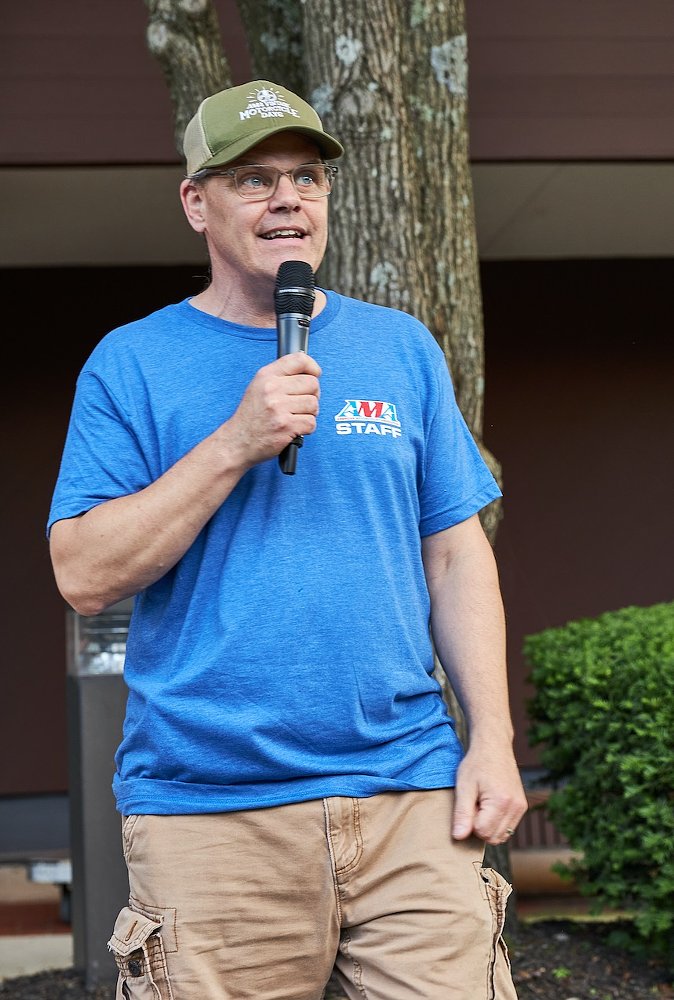For many years, one of the selling points for joining the American Motorcyclist Association has been that it is the main voice representing motorcyclists' interests in Washington, where few members of Congress and their staffers know much about motorcycles. That representation currently barely exists, after the exit of the three top AMA staff members in the four-person D.C. office.
Last month, Director of Government Relations Mike Sayre was fired, along with Tiffany Cipoletti, the Government Relations Manager for On-Highway issues. Peter Stockus, the Government Relations Manager for Off-Highway issues, had just given two weeks' notice of his resignation to take another job. The fourth and most junior member of the team, the Government Relations Grassroots Coordinator, remains on the job. For many years, the AMA has also had Western States Representative Nick Haris working on regional issues and based on the West Coast.
The turmoil raises two questions: First, the obvious, what happened? And second, more broadly, what's the future of the AMA's government relations effort, which is cited by many members as their primary reason for joining the association? And why should you care if the AMA has a staffed office in Washington?
Here's just one example that's potentially life and death. In Europe, the law requires that testing of advanced driver assistance systems (ADAS) in cars includes a test of their ability to detect motorcycles. The U.S. laws do not require a test of the ability to detect a motorcycle. If there is no organization in Washington representing riders, how many members of Congress will even think about motorcycles when laws are being written that affect the cars all around us on the road?
Politics and a non-partisan member association
So how did the AMA's D.C. office end up nearly unstaffed? Sayre agreed to talk to me about the events that led to his firing and I also contacted the AMA for comment. It's rarely a single incident that leads to a rupture like this, and Sayre told me about several smaller incidents over the course of his seven years at the AMA, but the specific incident that led to his firing started with a column in the March issue of the association's magazine, American Motorcyclist.
In 2021, the AMA hired Mitch Boehm as Editorial Director. Boehm was the editor of Motorcyclist magazine for 15 years, among other jobs in the industry, and a primary part of his responsibilities at the AMA is producing American Motorcyclist, which goes to members. In the March issue, both AMA President and Chief Executive Officer Rob Dingman and Boehm wrote columns that talked about the threat to motorcycling of autonomous vehicles. Nothing controversial there. We've published several articles about this issue here at Common Tread, as well.
What surprised some people was the second paragraph of Boehm's column:
"As if the border crisis, out-of-control crime and inflation, pushing adult subject matter on elementary school kids without parental knowledge, 70,000 Fentanyl deaths in the last 12 months, and a whole range of other nasty outcomes weren't enough, the whole AV [autonomous vehicle] thing has reached a point where even the most non-political, non-curious and non-involved person might ask... What the hell is going on in this country?"
At least some AMA members felt Boehm's statement read like a list of right-wing political talking points injected unnecessarily into the discussion of autonomous vehicles. Sayre said that if Boehm had also mentioned some left-wing political talking points to "make it on both ends of the political spectrum, I don't think there'd be much of a conversation here."
The key point is that it's important for the AMA to be perceived as non-partisan, not just because some members are conservative, some are liberal, and some are non-political, but also because the association has to work with legislators all across the spectrum. Motorcycle-related issues or legislation the AMA works on are sometimes supported by Democrats, sometimes by Republicans, and often there's no partisan relationship at all.
When the magazine reached members, one AMA member and grassroots activist Sayre worked closely with on local issues contacted him to say she and members of her club were unhappy with the wording. Sayre encouraged them to take their complaints to AMA leadership, hoping "that at least would maybe start a conversation internally and maybe get some of the anger off social media and in a place where it might actually do something," Sayre said. "Which was not the case."
Instead, AMA executives read Sayre's e-mails with the constituents, in which, Sayre admits, "I was fairly disparaging of Mitch and disappointed in the AMA." A few weeks later, he was fired, along with Cipoletti.
"They saw my attempt there as undermining the organization," Sayre said. "The way I view it is these were some critical stakeholders and I needed to repair that relationship."

"I had cleaned out my office three weeks before they fired me because I did not expect to be around all that much longer," Sayre said. "The non-partisan organization is getting a little too partisan, so I was looking for the door."
I spoke with AMA Chief Operating Officer James Holter and he declined to discuss the firings in the D.C. office because they are personnel matters. As for the Boehm column, Holter said the association got "a handful of e-mails" responding negatively.
Motorcyclists' representation in Washington
I talked at more length with Holter about the future of the AMA's government relations effort, and though he said the structure may change, he stressed that there will definitely be representation in Washington.
"It's critical to the mission of the AMA that we have representation in D.C. and someone who has experience on the legislative front at the federal level and building those relationships on both sides of the aisle is very important," Holter said. "Someone with experience in motorcycling and what matters to motorcyclists is going to be key. To reiterate, that individual has to be based in D.C."
But it may be an individual, rather than a four-person team. The AMA's government relations team has consisted, in recent years, of the four staffers in Washington and Haris in California. Haris handled regional issues in eight western states while the staff in D.C. handled federal issues and local issues in the rest of the country.
Holter said he expects the grassroots coordinator to remain in D.C., along with the senior representative that the AMA is now searching for to replace Sayre, but it's possible that other regional representatives, like Haris, could be hired and work elsewhere instead of having most of the staff in D.C. Holter stressed that final decisions on that structure have not been determined yet.
The AMA leadership has focused on cutting expenses in recent years, and eliminating the need to have an office near the Capitol would be another way to save more money.
Dingman's years as CEO have had ups and downs, such as his employee purges and the near demise of AMA Superbike racing after the rights to AMA professional racing were sold to Daytona Motorsports Group, one of Dingman's first initiatives. On the bright side, PowerSports Business magazine named him Powersports Business Executive of the Year in 2012, largely for the AMA's government relations effort in overturning part of a law that banned lead in products made for children, which would have prevented the sale of any off-road motorcycles built for kids.
The AMA has not seen the growth Dingman promised when he was made CEO, however. About the time Dingman took over as CEO, AMA membership hit an all-time high of around 300,000 members. At the time, Dingman said that number was artificially inflated by 49,000 members because of a partnership with Nationwide, the insurance company, in which Nationwide customers got a free AMA membership, some of them even if they weren't motorcyclists. For many years, however, AMA membership has been well below not just the 300,000-member level that existed when Dingman took over, but also below the 250,000 level he said was the more accurate number. Today, membership is around 214,000, according to Holter.
Full disclosure: I am an AMA Life Member (achieved after 25 years of consecutive membership) and was a member for nearly a decade before I became an AMA employee. I worked in the AMA Communications Department from 2001 to 2008 and resigned when it became clear that changes Dingman was making as CEO were going to significantly change my job. So I do have a conflict of interest and I'm pretty sure Rob Dingman would not consider me a reliable source. Just one more reason I don't call this journalism, though I do try to make it fair reporting.











 Membership
Membership



